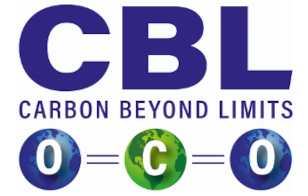Background
In the prior art, it is known that the water-soluble form of CO₂ (hydrogen carbonate) binds covalently to the C2 atom of amino acids (carbamate bond). The possibility of electrostatic binding of water-soluble carbon dioxide compounds to amino acids was not previously recognized.
CBL technology
It has been found that one of the natural amino acids present in all forms of life establishes an electrostatic bonding with hydrogen carbonates and carbonates, thereby absorbing a much larger quantity of CO₂ (in water-soluble form) than is generally known for amino acids. This process is performed without pressure and at any temperature (as long as the aqueous medium is present as a liquid). In contrast to covalent binding, the electrostatically bound derivate of CO₂ cannot be detached and released by increasing the temperature. The water-soluble derivate of CO₂ remain stably bound to the amino acid without pressure and cannot be released mechanically. It was found that a selective separation due to an electrophoretic transport of the water-soluble forms of CO₂ by means of the process of electrodialysis can be carried out whereby the aqueous derivates of CO₂ are transferred into a receiving medium. As a result, the aqueous acceptor medium or the amino acid which acts as an acceptor, respectively, is completely regenerated and is immediately available for the renewed absorption of CO₂ for recirculation. The water-soluble carbon dioxide derivatives transported into the receiving solution during electrodialysis spontaneously dissipate outside the electrodialysis unit in the form of a pure CO₂ gas.


